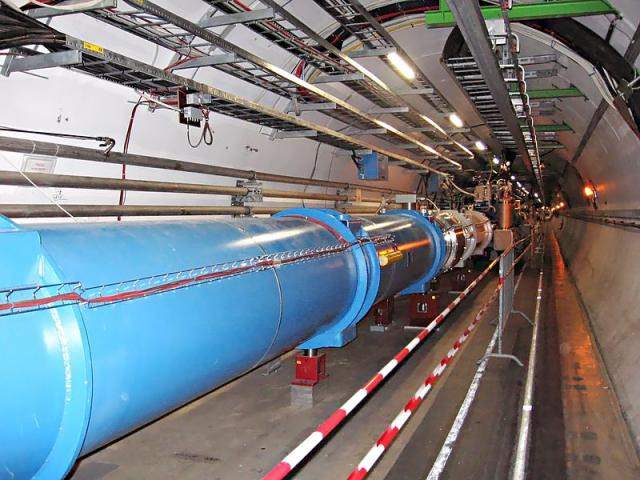At the Moriond Conference today, international scientists associated with the Large Hadron Collider (LHC) presented preliminary new results that offer further details about an enigmatic particle discovered last year.
Having analyzed two and a half times more data than was available for the discovery announcement in July, the scientists determined that the new particle is looking more and more like a Higgs boson – the particle linked to the mechanism that gives mass to elementary particles.

However, it is still unclear whether this is the Higgs boson of the Standard Model of particle physics, or possibly the lightest of several bosons predicted in some theories that go beyond the Standard Model.
“Finding the answer to this question will take time. Whether or not it is a Higgs boson is demonstrated by how it interacts with other particles, and its quantum properties,” CERN staff wrote in an official statement.
“For example, a Higgs boson is postulated to have no spin, and in the Standard Model its parity – a measure of how its mirror image behaves – should be positive. CMS (Compact Muon Solenoid) and ATLAS have compared a number of options for the spin-parity of this particle, and these all prefer no spin and positive parity. This, coupled with the measured interactions of the new particle with other particles, strongly indicates that it is a Higgs boson.”

Meanwhile, CMS spokesperson Joe Incandela said the preliminary results with the full 2012 data set made “it clear” scientists were dealing with a Higgs boson, “though we still have a long way to go to know what kind of Higgs boson it is,” he clarified.
ATLAS spokesperson Dave Charlton expressed similar sentiments.
“The beautiful new results represent a huge effort by many dedicated people. They point to the new particle having the spin-parity of a Higgs boson as in the Standard Model. We are now well started on the measurement programme in the Higgs sector,” he added.
To determine if this is indeed the Standard Model Higgs boson, scientists will attempt to precisely measure the rate at which the boson decays into other particles and compare the results to the predictions.
It should also be noted that the detection of the boson is a very rare event – as it takes around 1 trillion (1012) proton-proton collisions for each observed event. To characterize all of the decay modes will clearly require much more data from the LHC.






